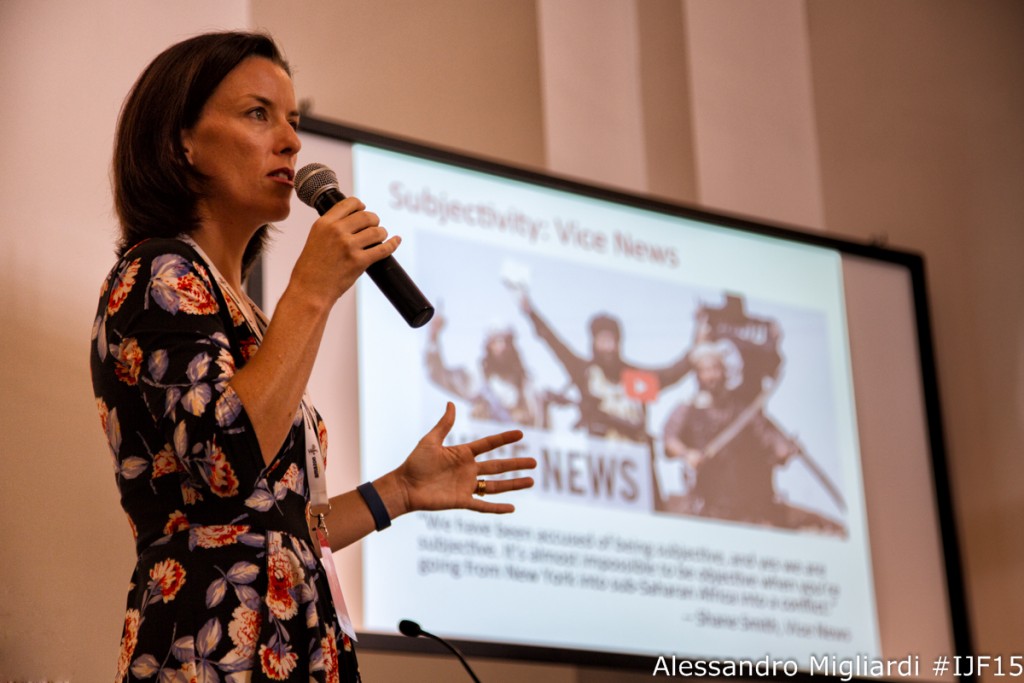
The tension between legacy journalists and the fleet of digital natives in the media industry today is no secret. Kellie Riordan, a journalist with the Australian Broadcast Corporation, spoke on April 16 at the International Journalism Festival about the challenges of upholding all the best things about journalism, such as accuracy and independence, while also innovating in the digital space.
According to Riordan, some digital-only news organisations can bring some new standards to the table, since, unlike print legacies, they are “not constrained by the shackles of 150 years of history.”
During her time with the UGC hub at the BBC, Riordan worked on debunking myths, which means verifying information using tools such as Pipl, Topsy and Geofeedia. In the digital space, like in print, “it is equally important to debunk information and decide what is real and current,” she said.
News organisations are learning how to adapt to this space by innovating through a number of features. With Quartz, which has an image-heavy, mobile-first strategy, Riordan noted, “it is interesting that they see their online space as an ongoing conversation with the audience.” Using annotations, they encourage the audience to contribute to a particular subject, especially if they have a large expertise on the topic. “Giving people a voice within the story removes the ‘journalist as God’ style of writing,” she added.
Another characteristic of online publishing is the flattening of content, which makes it harder for the audience to distinguish between the different types of content being published. Looking at BuzzFeed, Riordan said “it is easy to mash up editorial and advertorial,” but the more clever New York Times approach was creating a special way of searching for content. For example, if a reader is searching for editorial articles, the search automatically excludes advertorials and vice-versa.
Again referring to Quartz, Riordan pointed out that the difference between their digital and print sides is made clear: “When you go online or follow someone via social, you’re getting a particular type of journalism and not necessarily getting it all,” she said, “as opposed to print, where two people might consume the content from a newspaper in a similar way.”
She also referred to Vice News as an example in the context of subjectivity. Riordan said that “they have a very subversive style of journalism” and sometimes this leads to the question of whether or not this style gives the audience the whole picture behind a story. By using on the ground reporters, which shoot what they can and build content for social consumption in the shape of what they call “Vice News Capsules”, they are “trying to tell you the story that is happening at street level, rather than having reporters in jackets giving a detailed account of it,” Riordan added.
She stressed the importance of “taking this type of storytelling and coupling it with fact-checking” in order to accurately tell the reader what is going on behind a story.
Within digital journalism, hyperlinking is a useful technique for enhancing the transparency and accuracy of reporting. Riordan believes news organisations are not linking out as much as they should and “this is a way to show their work, demonstrate sourcing and backing up facts”. She said that “as journalists, we tend to make these big, bold statements without showing where we got the information from”, but “how we get it is as interesting to the audience as the information itself”.
Click here to read Kellie Riordan’s research paper, ‘Accuracy, independence, and impartiality. How legacy media and digital natives approach standards in the digital age‘ published by Reuters Institute for the Study of Journalism.